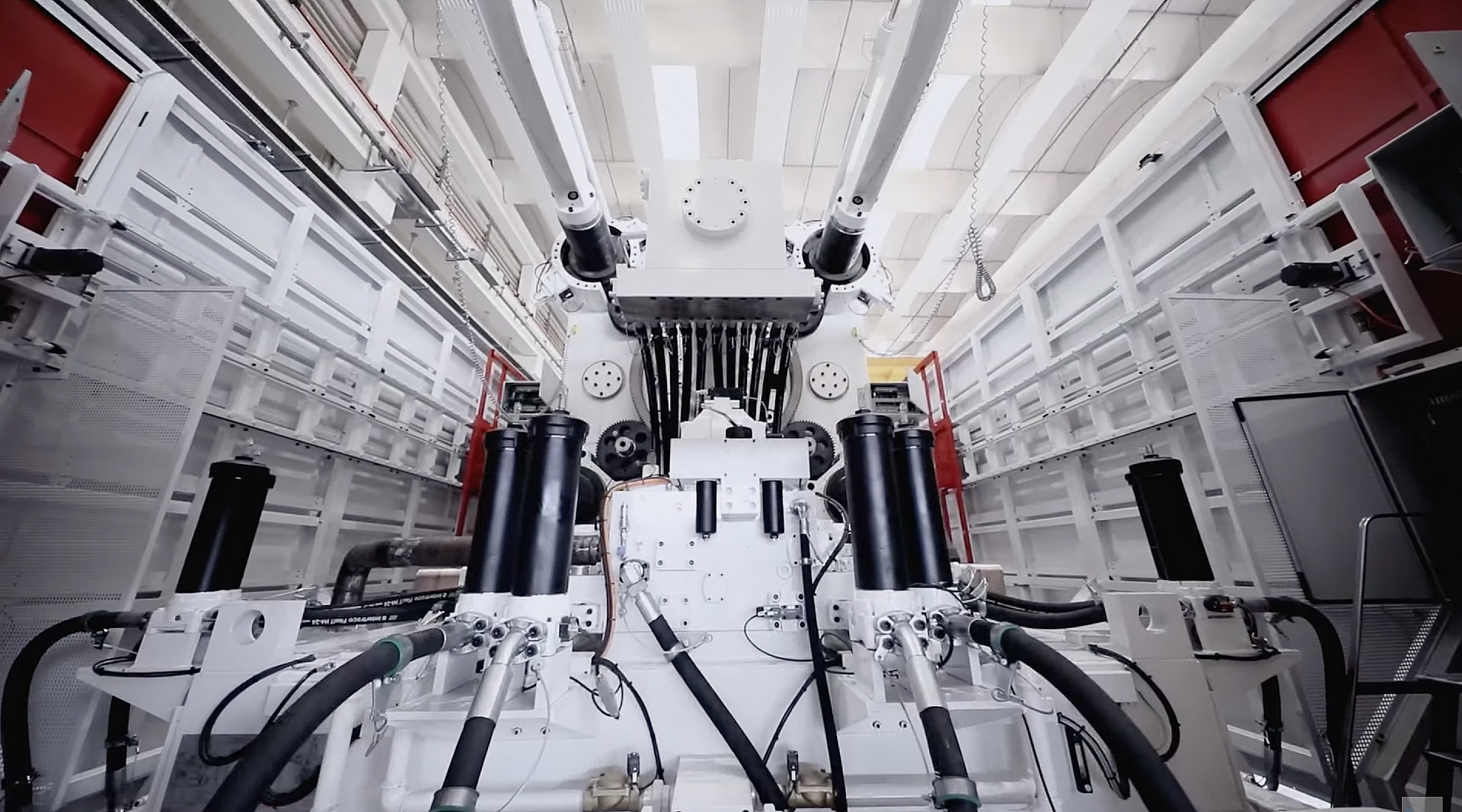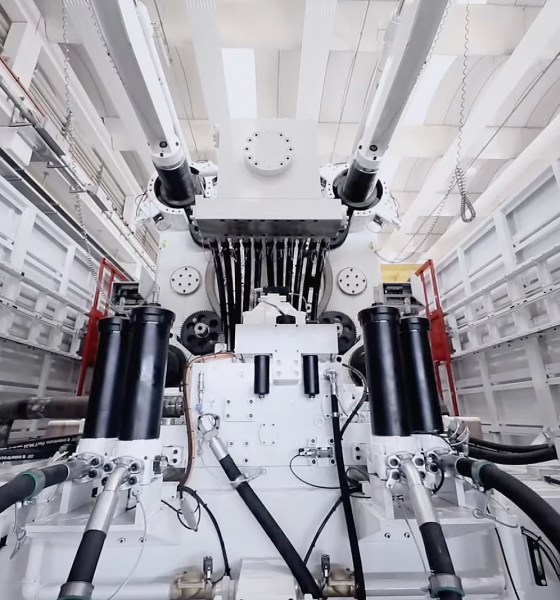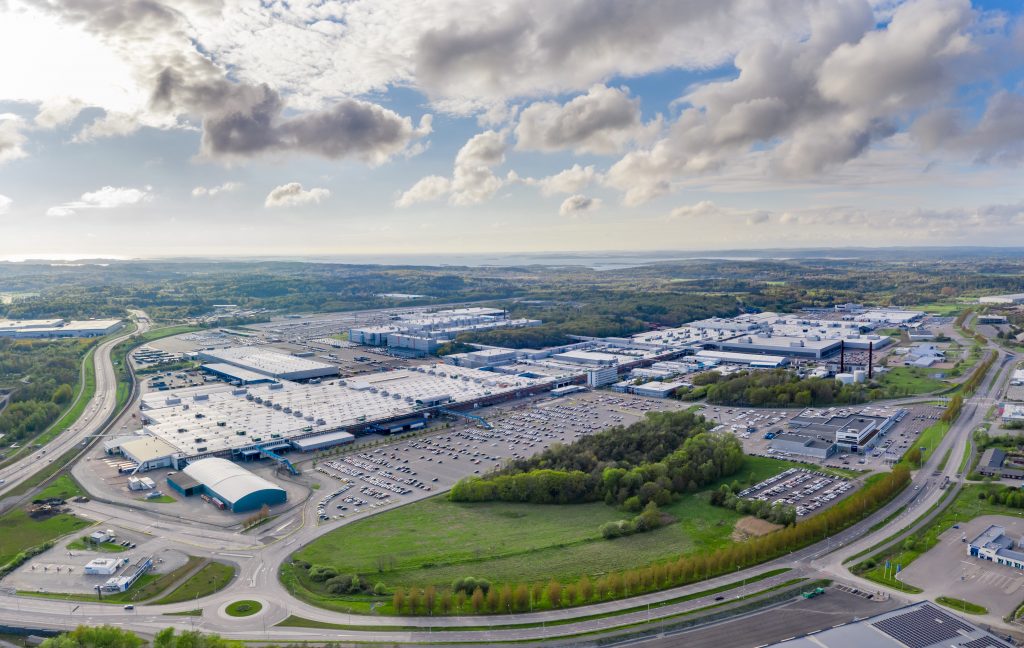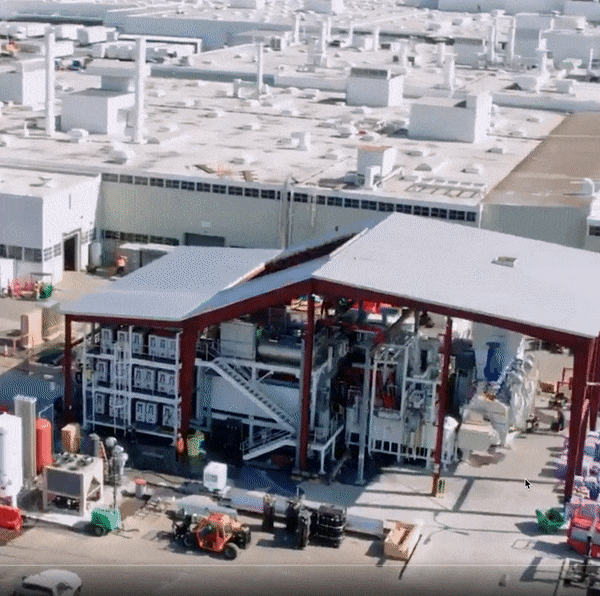

News
Volvo to adopt “Tesla style” megacasts for its next-gen electric vehicles
The use of Giga Presses may be considered futile and ill-conceived by Tesla skeptics, but it appears that some veteran automakers are currently preparing to adopt the technology for their next generation electric vehicles. First up seems to be Volvo, which recently noted that its Torslanda factory in Sweden, one of the company’s oldest and largest plants, would be shifting to the use of megacasts within the coming years.
Similar to Tesla, which practically pioneered the use of megacasts by using them for the Model Y, Volvo would be using the massive components for its next-generation electric vehicles. In a statement to Automotive News Europe, Volvo Solution Architect Vehicle Platform Mikael Fermer remarked that the use of megacasts is one of the company’s biggest technological shifts. “This is the biggest technology shift since we switched from wood to steel (for car bodies),” Fermer said.

The Torslanda factory is one of Volvo’s most historical sites, having been opened in April 1964. The facility is expected to receive numerous changes during its transition into an electric vehicle factory. A battery assembly plant would be added to the site, which would allow the automaker to integrate battery cells and modules to the floor structures of its upcoming EVs.
Volvo’s head of engineering and operations Javier Varela noted that the shift to the use of megacasts could result in 75% time savings compared with how large aluminum body components are traditionally put together today. “You avoid the stamping and welding processes and replace them with a megacasting process that is a one-shot injection followed by some tweaks after the injection,” Varela said.
Varela also noted that ultimately, the use of megacasted parts should allow Volvo to enjoy some sustainability benefits. “All the aluminum that you are injecting is used. You don’t have any scrap like you do with stamping,” Varela added.
While exciting, the utilization of megacasts in Volvo’s Torslanda plant is expected to start around 2025. By this time, the factory would likely also be ready to start the full production of the company’s next-generation EVs. Today, the Torslanda plant produces vehicles like the Volvo XC90 and XC60 SUVs, as well as the V90 station wagon.

Interestingly enough, it is not just Volvo that is looking to adopt megacasts in their future vehicle production. Other automakers such as German luxury car maker Mercedes-Benz is reportedly looking to utilize single-piece casts as well. Mercedes-Benz is reportedly looking to utilize megacasts to form the rear of its EQXX concept, which made its debut in Las Vegas last month during CES 2022.
Volvo is yet to announce if it is also purchasing Giga Presses from the IDRA Group, the company currently producing Tesla’s machines. That being said, the automaker did state that it was speaking with leading machine manufacturers to help the company make the switch to megacasts at the Torslanda site. No final decisions have been made yet, however, according to a Volvo spokesperson.
Volvo is looking to make half of its global vehicle sales from battery-powered cars by 2025. By 2030, the company plans to be an electric-only carmaker. To help foster and accelerate this transition, Volvo has announced investments totaling over $4 billion over the past two years.
Don’t hesitate to contact us with news tips. Just send a message to simon@teslarati.com to give us a heads up.

News
Tesla FSD fleet is nearing 7 billion total miles, including 2.5 billion city miles
As can be seen on Tesla’s official FSD webpage, vehicles equipped with the system have now navigated over 6.99 billion miles.

Tesla’s Full Self-Driving (Supervised) fleet is closing in on almost 7 billion total miles driven, as per data posted by the company on its official FSD webpage.
These figures hint at the massive scale of data fueling Tesla’s rapid FSD improvements, which have been quite notable as of late.
FSD mileage milestones
As can be seen on Tesla’s official FSD webpage, vehicles equipped with the system have now navigated over 6.99 billion miles. Tesla owner and avid FSD tester Whole Mars Catalog also shared a screenshot indicating that from the nearly 7 billion miles traveled by the FSD fleet, more than 2.5 billion miles were driven inside cities.
City miles are particularly valuable for complex urban scenarios like unprotected turns, pedestrian interactions, and traffic lights. This is also the difference-maker for FSD, as only complex solutions, such as Waymo’s self-driving taxis, operate similarly on inner-city streets. And even then, incidents such as the San Francisco blackouts have proven challenging for sensor-rich vehicles like Waymos.
Tesla’s data edge
Tesla has a number of advantages in the autonomous vehicle sector, one of which is the size of its fleet and the number of vehicles training FSD on real-world roads. Tesla’s nearly 7 billion FSD miles then allow the company to roll out updates that make its vehicles behave like they are being driven by experienced drivers, even if they are operating on their own.
So notable are Tesla’s improvements to FSD that NVIDIA Director of Robotics Jim Fan, after experiencing FSD v14, noted that the system is the first AI that passes what he described as a “Physical Turing Test.”
“Despite knowing exactly how robot learning works, I still find it magical watching the steering wheel turn by itself. First it feels surreal, next it becomes routine. Then, like the smartphone, taking it away actively hurts. This is how humanity gets rewired and glued to god-like technologies,” Fan wrote in a post on X.
News
Tesla starts showing how FSD will change lives in Europe
Local officials tested the system on narrow country roads and were impressed by FSD’s smooth, human-like driving, with some calling the service a game-changer for everyday life in areas that are far from urban centers.

Tesla has launched Europe’s first public shuttle service using Full Self-Driving (Supervised) in the rural Eifelkreis Bitburg-Prüm region of Germany, demonstrating how the technology can restore independence and mobility for people who struggle with limited transport options.
Local officials tested the system on narrow country roads and were impressed by FSD’s smooth, human-like driving, with some calling the service a game-changer for everyday life in areas that are far from urban centers.
Officials see real impact on rural residents
Arzfeld Mayor Johannes Kuhl and District Administrator Andreas Kruppert personally tested the Tesla shuttle service. This allowed them to see just how well FSD navigated winding lanes and rural roads confidently. Kruppert said, “Autonomous driving sounds like science fiction to many, but we simply see here that it works totally well in rural regions too.” Kuhl, for his part, also noted that FSD “feels like a very experienced driver.”
The pilot complements the area’s “Citizen Bus” program, which provides on-demand rides for elderly residents who can no longer drive themselves. Tesla Europe shared a video of a demonstration of the service, highlighting how FSD gives people their freedom back, even in places where public transport is not as prevalent.
What the Ministry for Economic Affairs and Transport says
Rhineland-Palatinate’s Minister Daniela Schmitt supported the project, praising the collaboration that made this “first of its kind in Europe” possible. As per the ministry, the rural rollout for the service shows FSD’s potential beyond major cities, and it delivers tangible benefits like grocery runs, doctor visits, and social connections for isolated residents.
“Reliable and flexible mobility is especially vital in rural areas. With the launch of a shuttle service using self-driving vehicles (FSD supervised) by Tesla in the Eifelkreis Bitburg-Prüm, an innovative pilot project is now getting underway that complements local community bus services. It is the first project of its kind in Europe.
“The result is a real gain for rural mobility: greater accessibility, more flexibility and tangible benefits for everyday life. A strong signal for innovation, cooperation and future-oriented mobility beyond urban centers,” the ministry wrote in a LinkedIn post.
News
Tesla China quietly posts Robotaxi-related job listing
Tesla China is currently seeking a Low Voltage Electrical Engineer to work on circuit board design for the company’s autonomous vehicles.

Tesla has posted a new job listing in Shanghai explicitly tied to its Robotaxi program, fueling speculation that the company is preparing to launch its dedicated autonomous ride-hailing service in China.
As noted in the listing, Tesla China is currently seeking a Low Voltage Electrical Engineer to work on circuit board design for the company’s autonomous vehicles.
Robotaxi-specific role
The listing, which was shared on social media platform X by industry watcher @tslaming, suggested that Tesla China is looking to fill the role urgently. The job listing itself specifically mentions that the person hired for the role will be working on the Low Voltage Hardware team, which would design the circuit boards that would serve as the nervous system of the Robotaxi.
Key tasks for the role, as indicated in the job listing, include collaboration with PCB layout, firmware, mechanical, program management, and validation teams, among other responsibilities. The role is based in Shanghai.
China Robotaxi launch
China represents a massive potential market for robotaxis, with its dense urban centers and supportive policies in select cities. Tesla has limited permission to roll out FSD in the country, though despite this, its vehicles have been hailed as among the best in the market when it comes to autonomous features. So far, at least, it appears that China supports Tesla’s FSD and Robotaxi rollout.
This was hinted at in November, when Tesla brought the Cybercab to the 8th China International Import Expo (CIIE) in Shanghai, marking the first time that the autonomous two-seater was brought to the Asia-Pacific region. The vehicle, despite not having a release date in China, received a significant amount of interest among the event’s attendees.








